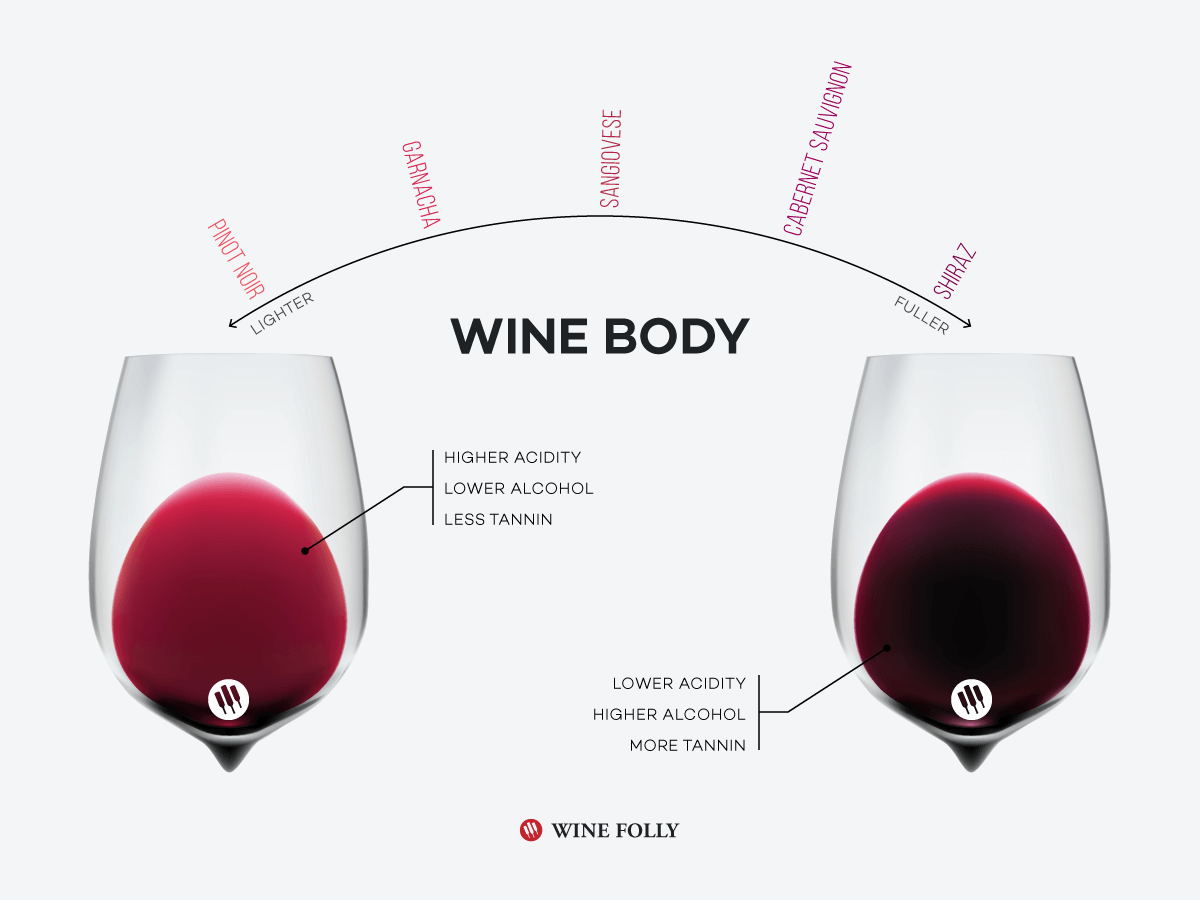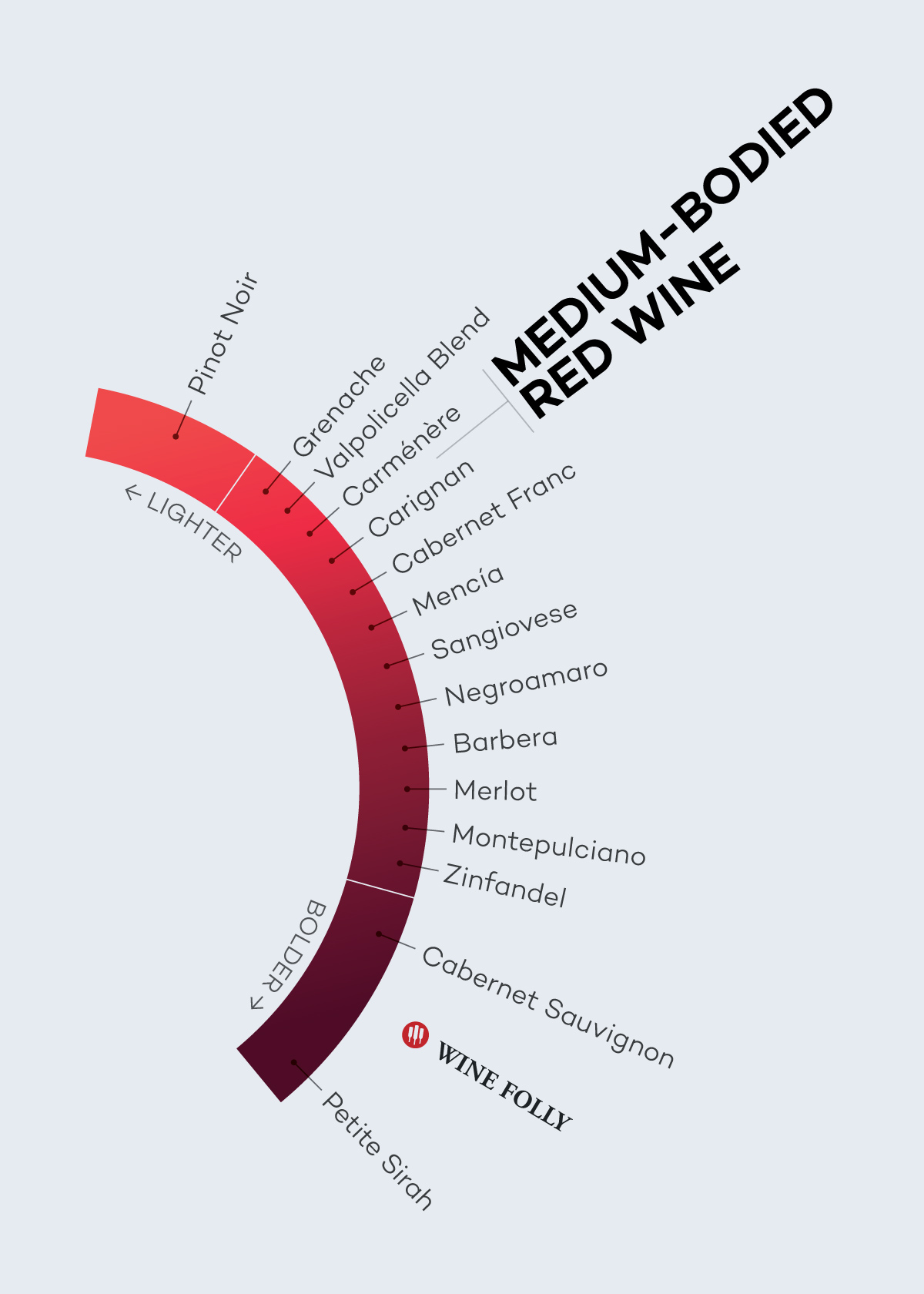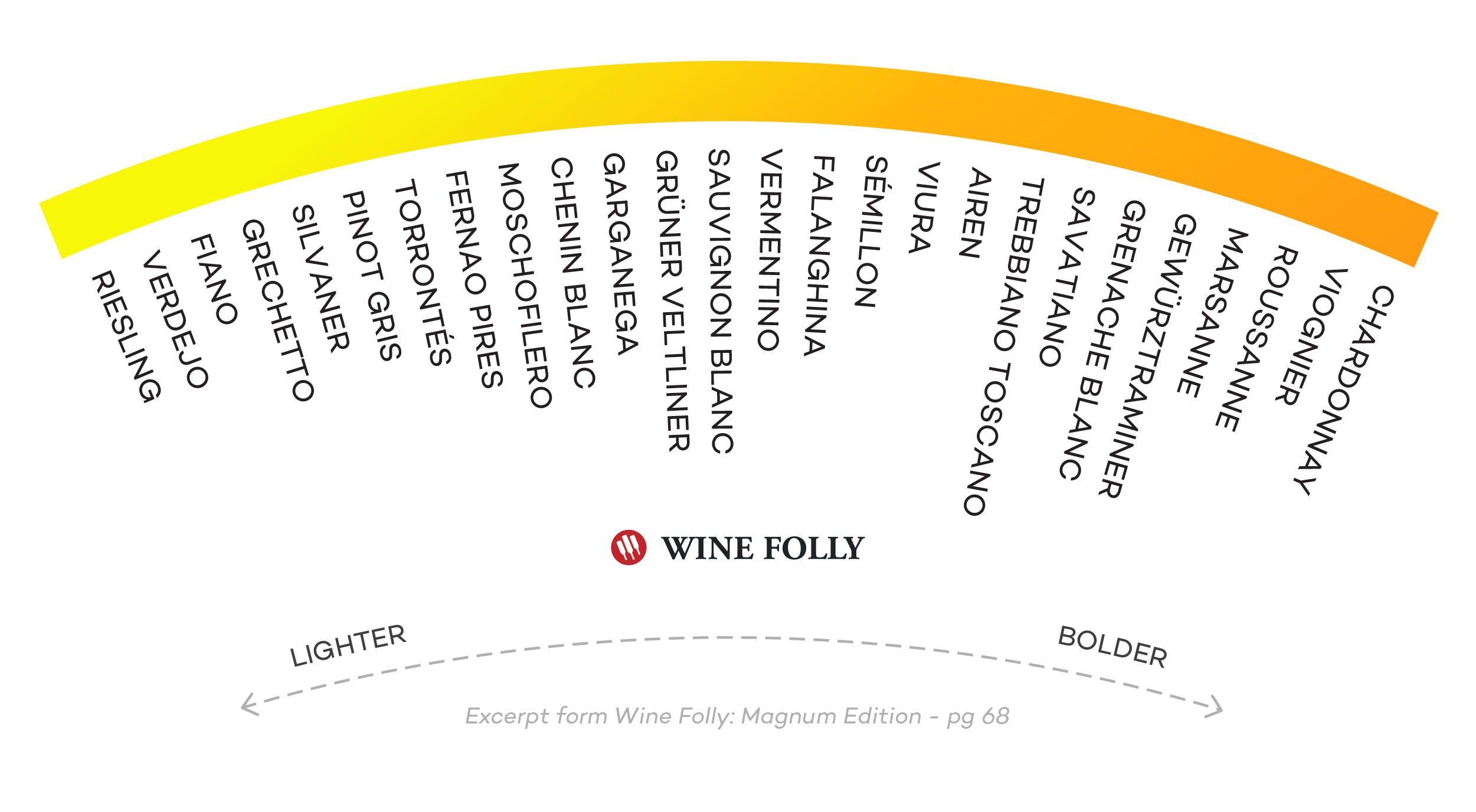Wine body is defined by how heavy and rich a wine tastes. It’s a combination of several factors: grape variety, alcohol level, and even sweetness level.
If you’re trying to find new favorites, wine body is a great way to differentiate grape varieties and find your style preference. Let’s break down the different body styles with a few examples so you can find more of what you love.

How To Tell The Body of a Wine
Because of the fat level, it’s easy to taste the difference between whole milk and skim milk. That said, the fullness of wine’s body isn’t as easy to pinpoint because it involves many factors.
Fortunately, there are a few clues you can look for on the wine bottle:
- Alcohol Level: Wines above 14% alcohol tend to taste more full-bodied.
- Grape Variety: Certain grape varieties produce more full-bodied wines (see below).
- Oak Aging: Much like Bourbon, wines aged in fresh oak barrels often taste more full-bodied. Wine producers often mention oak aging on the back label.
- Climate Type: As a general rule, grapes grown in warmer climates tend to produce richer, more full-bodied wines (this depends on the producer!).
- Residual Sugar: Residual sugars, when present in small amounts, can add to a wine’s body without necessarily making it taste sweet.

Grape Variety vs. Wine Body
Some grape varieties produce wines that fit neatly into a wine body type. Here are a few examples to explore.
Light-Bodied Red Wines
Generally speaking, light-bodied red wines have average alcohol levels, lower tannins, and less color. They often taste smooth because of reduced tannin (e.g. they’re less astringent).
Also, when grown in cooler climates, light-bodied reds sometimes taste a bit “sharp” or “spicy” from increased acidity.
Medium-Bodied Red Wines
The food-friendly wines! The difference between medium- and full-bodied wines has a lot to do with alcohol and acidity level. We humans tend to perceive wines with higher acids as tasting lighter-bodied. So, grape varieties with more natural acidity often fit into the medium-bodied category.
Additionally, many wines slide into this category because of how they’re made. For example, a Merlot with lower alcohol (under 14%) and less oak-aging may also be medium-bodied.
Full-Bodied Red Wines
The cocktail wines! Full-bodied red wines taste so rich that they can stand on their own. What makes them taste big? Well, all that increased tannin, higher alcohol and lower acidity results in a heavier taste.
Additionally, aging wines in oak barrels not only adds oak flavors of vanilla, cedar, and baking spice to wines, but it also softens the flavors.
For you science enthusiasts, there’s also a tasteless substance called glycerol, derived naturally from fermenting grapes, that increases the perception of wine’s body.

What About White Wines?
The same rules for red wines also apply to wine body in white wines. For example, one reason Chardonnay is often considered a full-bodied white wine is because of its frequent oak aging.
Explore More Wines by Body
Take a look at the Grapes page on Wine Folly to see how varieties stack up!
Or, you can get the Wine Folly: Magnum Edition book, which contains a collection of 100 common grapes and wines to explore.
Additionally, if you’re looking for some good beginner red wines to start with, check out this short list of 6 wines!